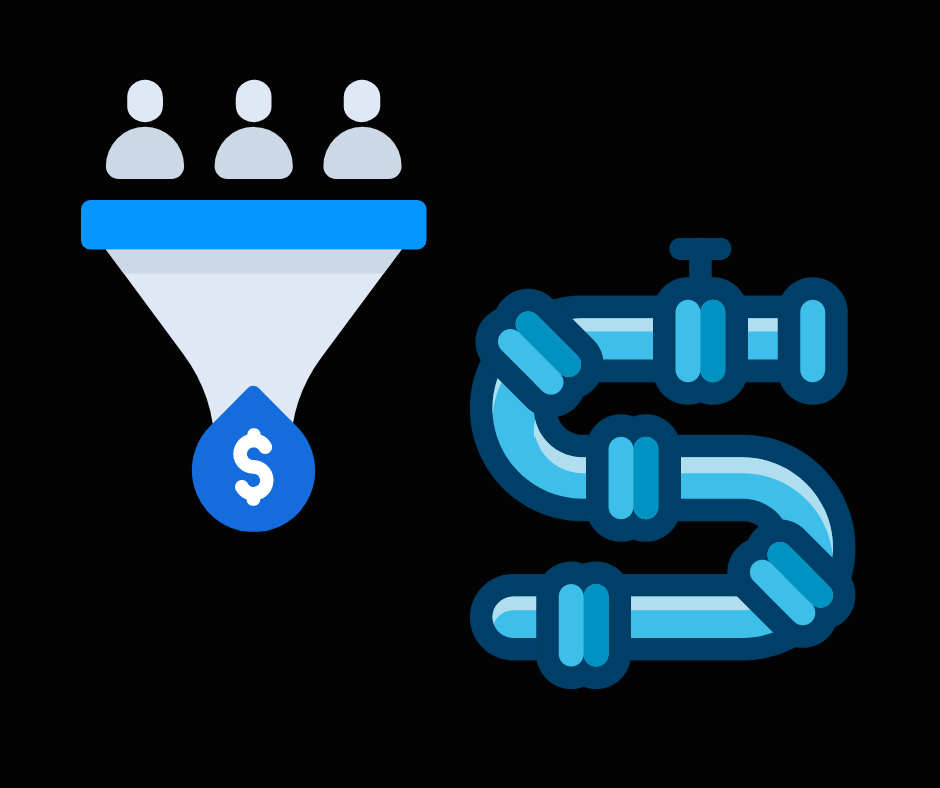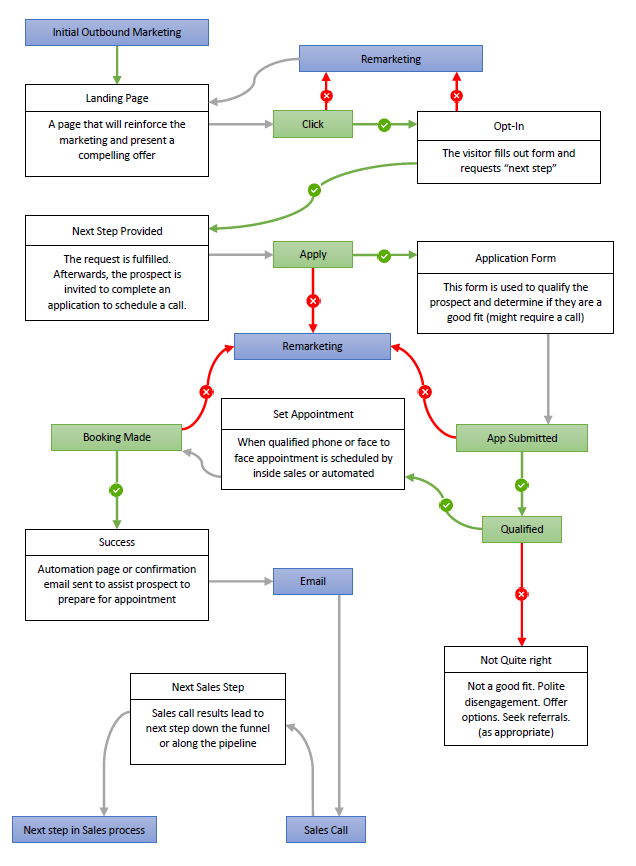How to Increase Sales Using the Sales Funnel & Pipeline

Most anyone in sales understands when you refer to the sales process as either a funnel or a pipeline.
The funnel depicts more abundant, less qualified, prospects at the top and as time (and the discovery process) goes by the number dwindles until sales come out at the bottom.
The pipeline shows a timeline from left to right as prospects become further qualified through appointments, quotes and finally closed sales that flow out the end of the pipeline. There are “leaks” in the pipe as prospects are lost or eliminated (this relates to the sales conversion rate and will be addressed in a future post).

This lead tracking process applies to both prospects and customers. Different steps and tactics apply to each, but the underlying principle holds true. It is critical to establish a lead tracking nomenclature within your sales culture (S∙I∙R uses a simple numbering system, the higher the number from 1 to 10 the more qualified the prospect and nearer to the “close” they are).
There are several reasons for having a common lead tracking language:
- Measure what tactics are working and not working.
- Approximate timing to “close” sales including percent probability of close.
- Turn sales activities into a means to forecast sales in conjunction with social media “metrics” that alone may not easily translate into sales forecasts.
- Pipeline / funnel numbers can be used in sales conversion rate analysis which is a vital part of effective sales management. (More on this in future blogs).
- Adapt this “language” into your CRM to automate the numbers and the sales management reports.
Successful sales people, sales managers and sales organizations understand how critical lead tracking and a common nomenclature are. Savvy sales people track their own conversion rates to better estimate sales and control their commissions. Effective sales managers do it for the same reason and to encourage best possible results for the success of their sales people. Successful sales organizations track conversions in order to gauge sales team effectiveness and because they want to know if they are winning the game and what is the score.
These principles should be used to measure results for both your internal sales organization and as well as any outsourced solutions you are using such as independent reps, inside sales services (like S∙I∙R), social media services, telemarketing, etc.
It might seem like a daunting task to track a sales process which might combine both “human” touches and social media / automated marketing “touches”. Coupled with the fact that it takes anywhere from six to ten “touches” to obtain a viable sales lead and you’ve got a lot to keep track of.
This is where a visual of the funnel/pipeline pathway chart is helpful. S∙I∙R has been utilizing a sales pipeline process since well before social media existed. With the advent of social media, we needed to adapt the linear sales pipeline with the use of social media which is harder to adapt into a “time linear” model. Said another way: prospects can “jump around” in the pipeline and social media tends to accelerate / facilitate that process.
The funnel/pipeline graphic shows the user exactly how:
- Prospects (and customers) can move from “touch to touch” down a pathway to “close” (or skip touches).
- Prospects (and customers) can jump ahead or fall back in the process.
- Prospects (and customers) can drop out of the pipeline altogether.

We trust the graphic and pipeline discussion is useful for your sales strategy and organization. As you review it and decide how each step fits (insert your own steps) with your sales process you should consider which steps are best suited to human and/or “automated” touches. Getting a handle on where and when human “touch” needs to happen will be our primary focus in our next “book” (blog).
As always, we are ready to answer any questions you have. Leave a comment or contact S-I-R to continue the discussion.
This Post Has One Comment
Comments are closed.

Pingback: EFFECTIVE USE OF TARGETED SALES & MARKETING TACTICS -